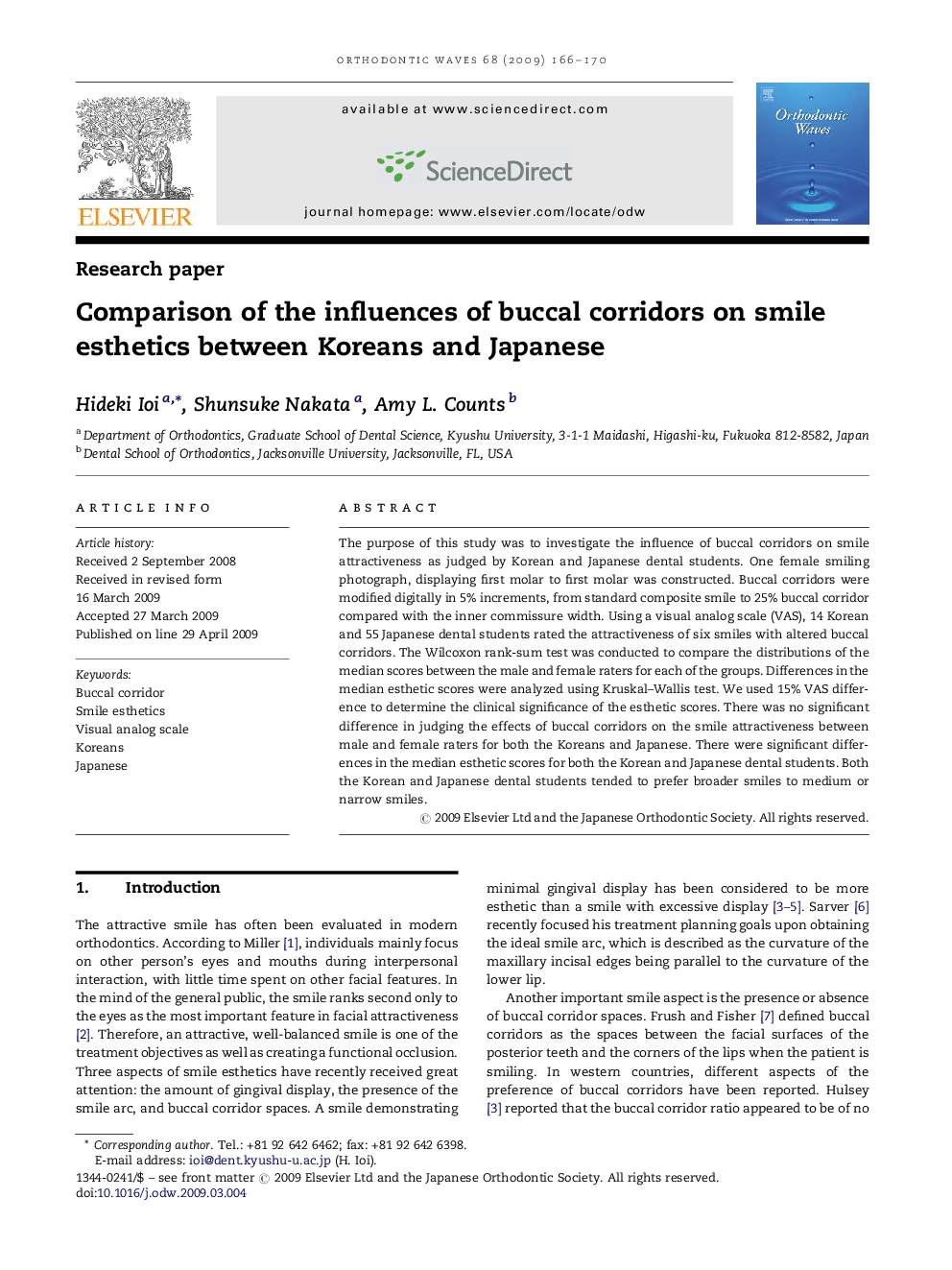| Article ID | Journal | Published Year | Pages | File Type |
|---|---|---|---|---|
| 3170609 | Orthodontic Waves | 2009 | 5 Pages |
The purpose of this study was to investigate the influence of buccal corridors on smile attractiveness as judged by Korean and Japanese dental students. One female smiling photograph, displaying first molar to first molar was constructed. Buccal corridors were modified digitally in 5% increments, from standard composite smile to 25% buccal corridor compared with the inner commissure width. Using a visual analog scale (VAS), 14 Korean and 55 Japanese dental students rated the attractiveness of six smiles with altered buccal corridors. The Wilcoxon rank-sum test was conducted to compare the distributions of the median scores between the male and female raters for each of the groups. Differences in the median esthetic scores were analyzed using Kruskal–Wallis test. We used 15% VAS difference to determine the clinical significance of the esthetic scores. There was no significant difference in judging the effects of buccal corridors on the smile attractiveness between male and female raters for both the Koreans and Japanese. There were significant differences in the median esthetic scores for both the Korean and Japanese dental students. Both the Korean and Japanese dental students tended to prefer broader smiles to medium or narrow smiles.
